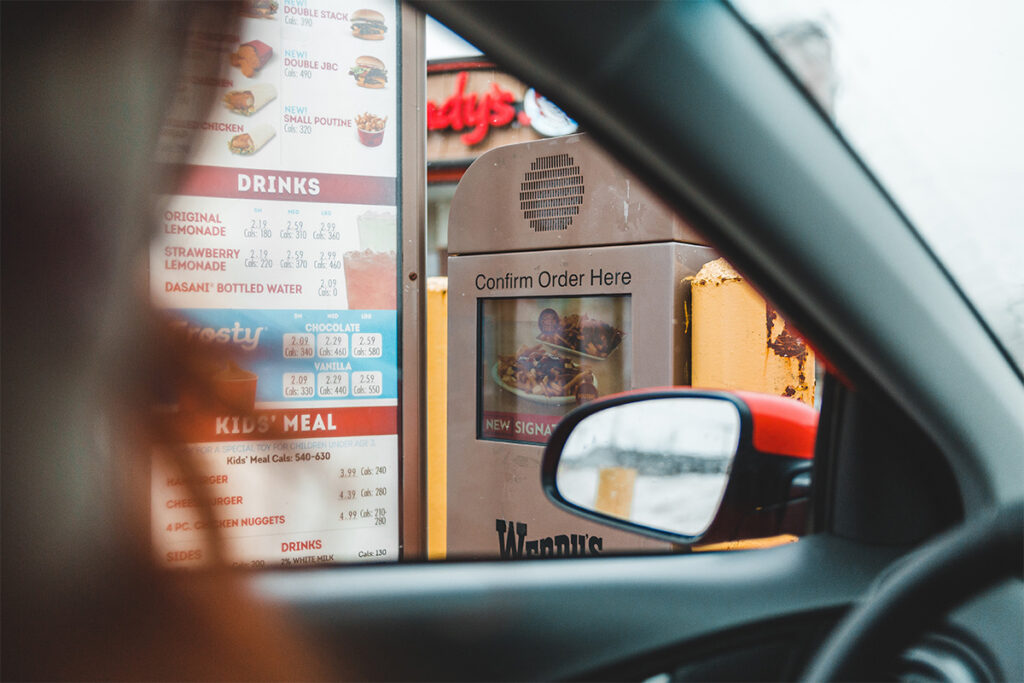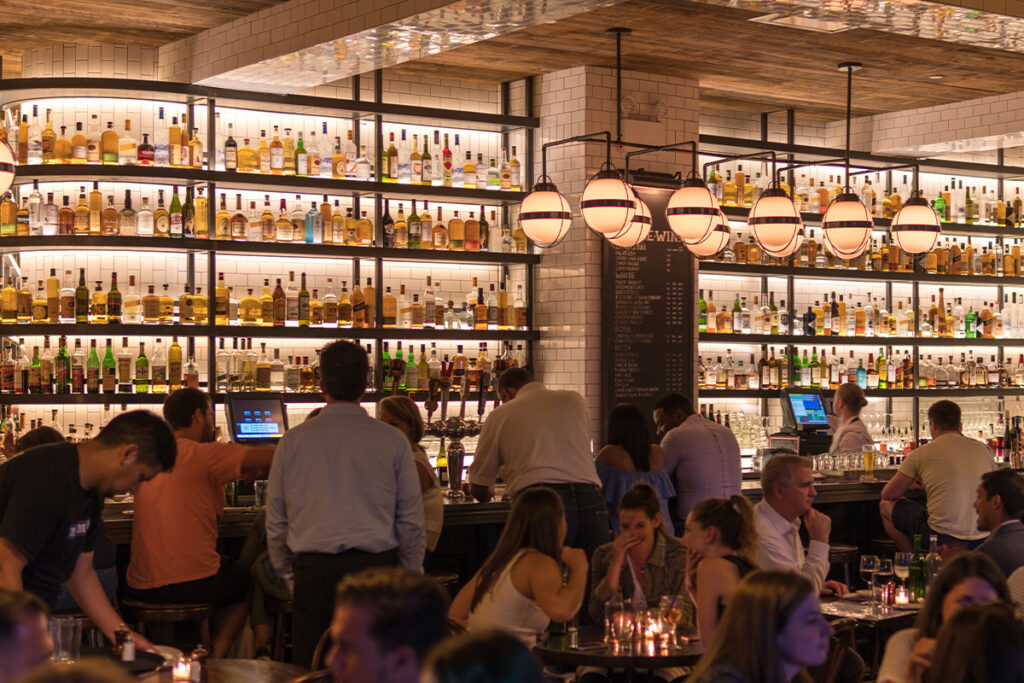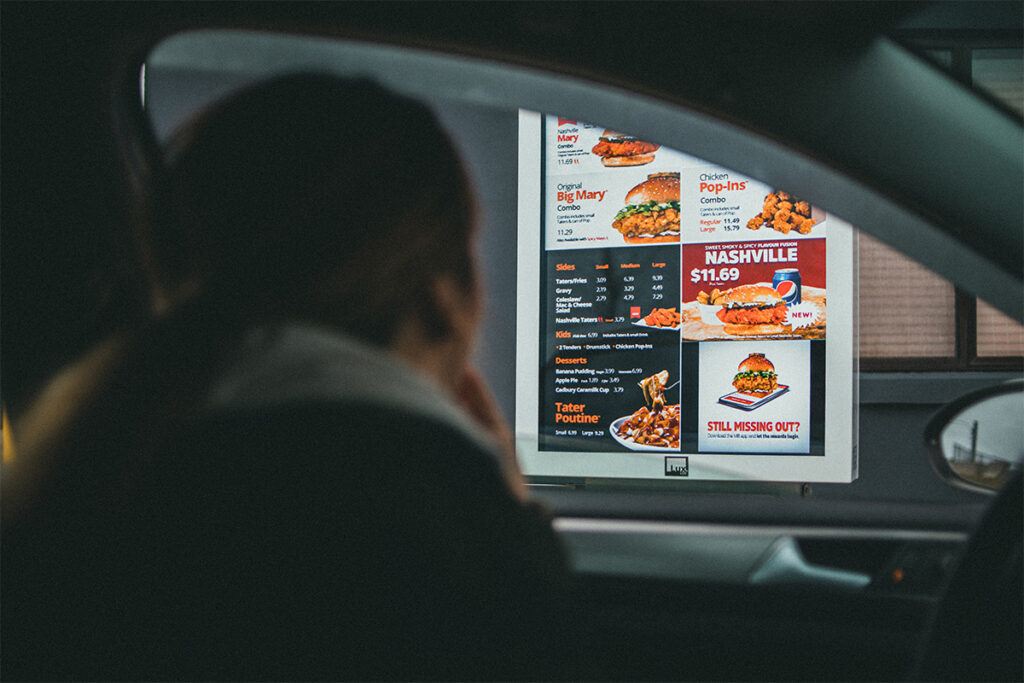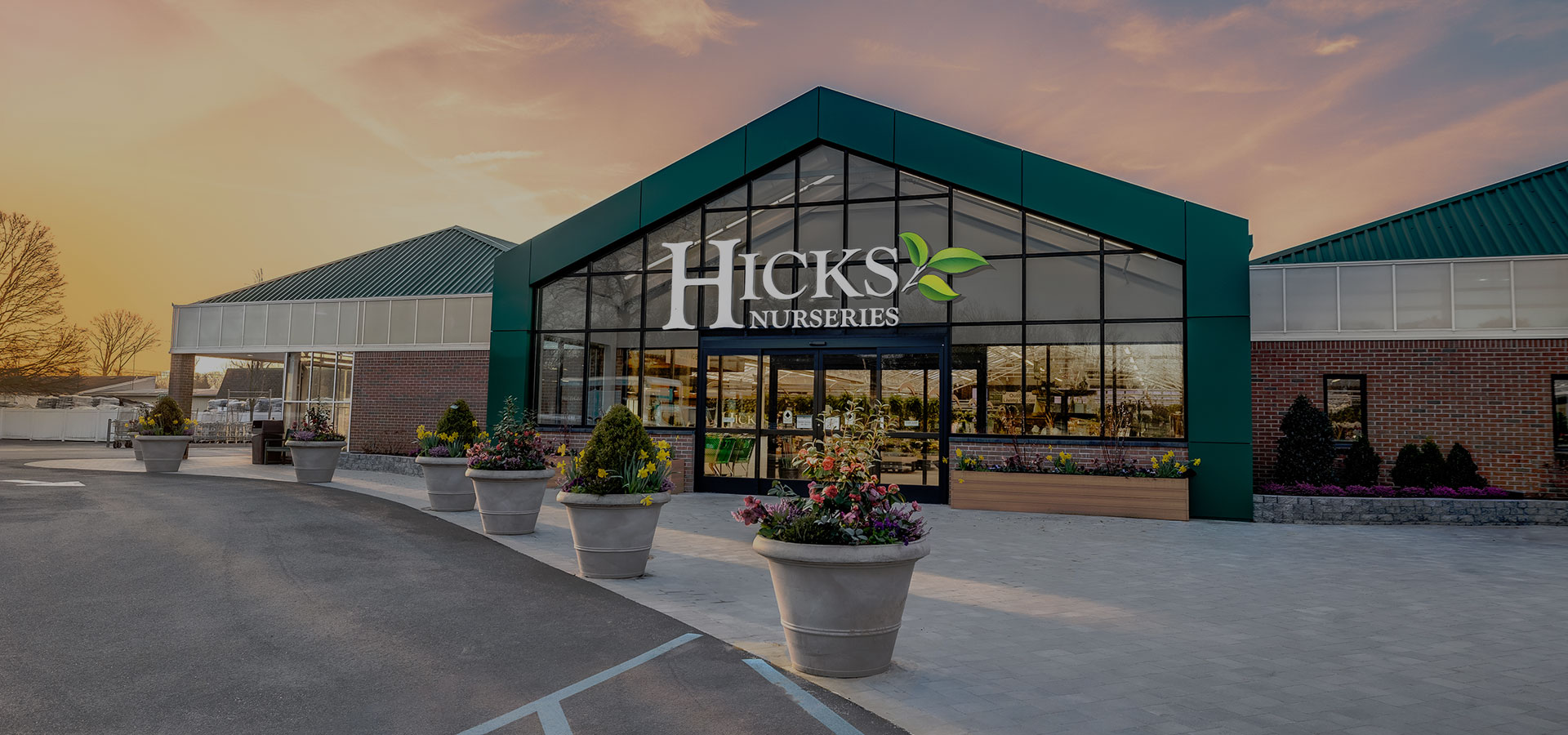As you pull up to the drive-thru window of your go-to fast food joint, a cheerful voice chimes in over the intercom, “Welcome! What can I get for you today?”
Throughout the interaction, you may hear background noise from the kitchen or other employees conversing. In the end, it’s an interaction you may not think twice about. Yet, with the advent of AI in the restaurant industry, this daily exchange is about to undergo a transformation.
Like in many industries, AI, or artificial intelligence, is changing the landscape of the fast food industry … and the drive-thru experience is just the beginning.

Meet Tori, the AI-Powered Voice Drive-Thru
If the above scenario sounds out of this world, look no further than Tori, an artificial intelligence that OpenCity launched in a Webster, New York Panera as the restaurant industry’s first “conversational robot voice drive-thru.”
Like her human counterpart, Tori can take customer orders, enter them into the register and pass them on to employees, who begin preparing the meals. While workers at the Panera store can listen to the interactions between Tori and customers, they are able to prioritize other tasks in the kitchen.
OpenCity’s CEO Nick Belsito said in a news segment that Tori is able to have natural conversations with a consumer and can even handle more than the average order, including accommodating customers with speech disabilities, accents and multiple languages. If there is a scenario where Tori cannot complete an order, a staff member is nearby to jump in.

Not Lovin’ It
As part of its efforts to streamline its ordering process, McDonald’s began implementing an AI-powered voice system to automate its drive-thru order-taking experience. The fast food giant partnered with IBM to develop and deploy the AI-enabled voice system, with the goal of accelerating the ordering experience and filling gaps in its workforce. The company has even gone as far as testing the implementation of robot fryers, furthering its push toward automation.
Not everyone is lovin’ it, however.
McDonald’s AI drive-thru experienced lower accuracy rates than desired before rolling out the tech nationwide. According to a report from Restaurant Dive, the AI scored in “the low 80% range” in 24 Illinois restaurants, leaving room for improvement in automated ordering accuracy.
As McDonald’s continues to test conversational AI technology with real customers, more complaints have emerged on social media platforms like TikTok. Customers have expressed frustration with the system’s inability to understand their accents, leading to incorrect orders and extended wait times. So what does this mean for the future of AI in the drive-thru?
The Driving Forces Behind AI Use in Restaurants
While McDonald’s AI drive-thru may not be perfect just yet, it’s clear that more fast-food chains will turn to automation to meet the demands of today’s consumers. AI-based speech recognition technology also opens the door to creating recommendations and personalized experiences for each guest.
Industries like healthcare, manufacturing and even finance are taking advantage of AI capabilities, but what’s behind its growing use in the restaurant industry? The answer lies in complex problems that have been plaguing restaurants–labor shortages, longer wait times, missed upselling opportunities, and order accuracy.
One of the leading AI voice assistants in the restaurant industry aims to reverse these trends. Presto’s AI-powered drive-thru voice assistance occupies more than 75% of the market share currently and is designed to help restaurants maximize labor efficiency and generate new revenue. The company recently announced it will now be powering drive-thru automation at Carl’s Jr. and Hardee’s locations across the United States.
Yet it’s these driving forces behind the use of AI technology in drive-thrus that are also spurring the use of AI in other areas of restaurant operations.

From Kitchen to Table
AI technology presents an opportunity for both local eateries and larger restaurant chains to streamline operations, boost efficiency, and cut costs. In addition to voice ordering in drive-thru lanes, AI can be used to:
- Offer voice research for nearby restaurants: By using location data and customer profiles, AI can suggest restaurants that match customers’ taste and location preferences.
- Voice ordering and food delivery apps: AI-powered voice assistants can be integrated into mobile apps and websites to make ordering food more convenient and seamless for customers. By using natural language processing (NLP) technology, AI can also accurately understand customers’ orders and provide recommendations based on their previous orders.
- Kitchen automation: Automated kitchen equipment can help restaurants optimize their operations and reduce waste. By analyzing sales data and predicting demand, AI can optimize food preparation and inventory management to minimize waste and improve efficiency. This can help restaurants reduce costs and improve profitability while also providing a better customer experience.
- Voice AI self-service kiosks: AI-powered self-service kiosks can provide customers with a convenient and personalized way to order food.
- Customer service: AI-powered chatbots can provide 24/7 customer support and answer common questions or resolve issues in real time.
- Fraud detection: AI can help restaurants detect and prevent fraud through the ability to analyze transaction data and identify any suspicious activity.
For customers looking for the perfect place to hold a retirement dinner or birthday party, augmented reality can give restaurants an advantage by providing customers with immersive experiences. AR can offer consumers virtual tours of restaurants and give them a close-up look at some of the dishes the restaurant offers, helping them make more informed purchase decisions and an improved experience when making a reservation.

The Future of Eating Out
Consumers are increasingly embracing AI in retail. A RedPoint Global survey found that nearly 75% of respondents said they believe there is potential for AI to impact customer experience in the future. It’s no surprise then that this acceptance of AI in everyday life is extending into the restaurant industry as well.
A National Restaurant Association survey found that:
- 79% of customers think enhanced restaurant technology improves their overall experience.
- 68% believe that they would be more likely to choose a restaurant that gives them the opportunity to use mobile payments.
- 62% would be more likely to select a restaurant that provides mobile ordering.
The National Restaurant Association estimates that restaurants only experience a 20% success rate. More than half–an astonishing 60%–fail in their first year. Within 5 years, nearly 80% of them close their doors.
Restaurants that don’t integrate the latest technology in their operations may risk falling behind their competitors that are leveraging the benefits of tools designed to improve customer experience. Today, AI-powered tools offer the opportunities needed for restaurants to ensure their customers can discover new products and menu items, receive real-time customer service, and make more informed purchase decisions.
As AI technology continues to evolve, we can expect even more consumers to embrace its use, further driving the adoption of AI in the retail and restaurant industries.





